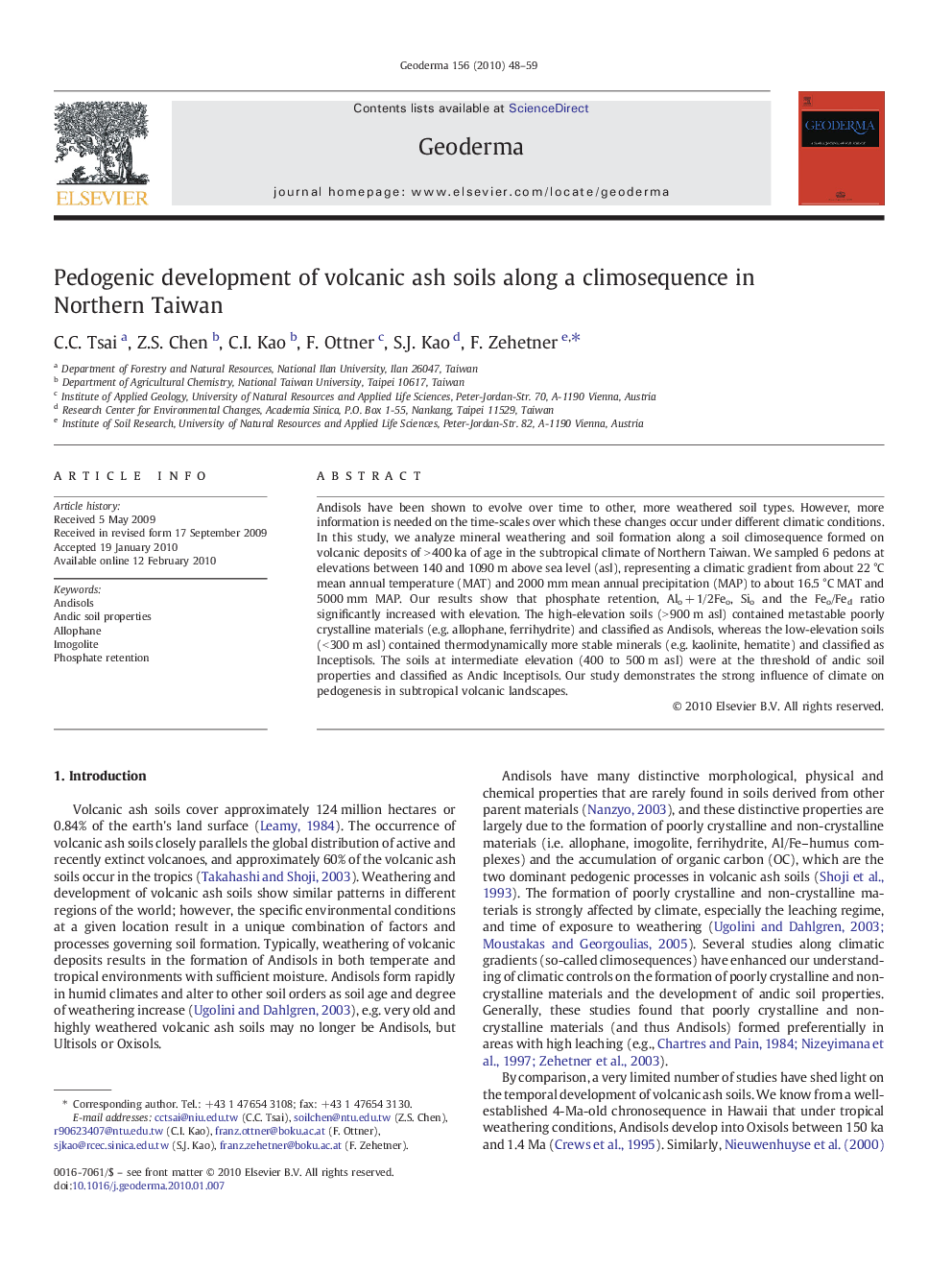| Article ID | Journal | Published Year | Pages | File Type |
|---|---|---|---|---|
| 4574519 | Geoderma | 2010 | 12 Pages |
Andisols have been shown to evolve over time to other, more weathered soil types. However, more information is needed on the time-scales over which these changes occur under different climatic conditions. In this study, we analyze mineral weathering and soil formation along a soil climosequence formed on volcanic deposits of > 400 ka of age in the subtropical climate of Northern Taiwan. We sampled 6 pedons at elevations between 140 and 1090 m above sea level (asl), representing a climatic gradient from about 22 °C mean annual temperature (MAT) and 2000 mm mean annual precipitation (MAP) to about 16.5 °C MAT and 5000 mm MAP. Our results show that phosphate retention, Alo + 1/2Feo, Sio and the Feo/Fed ratio significantly increased with elevation. The high-elevation soils (> 900 m asl) contained metastable poorly crystalline materials (e.g. allophane, ferrihydrite) and classified as Andisols, whereas the low-elevation soils (< 300 m asl) contained thermodynamically more stable minerals (e.g. kaolinite, hematite) and classified as Inceptisols. The soils at intermediate elevation (400 to 500 m asl) were at the threshold of andic soil properties and classified as Andic Inceptisols. Our study demonstrates the strong influence of climate on pedogenesis in subtropical volcanic landscapes.
